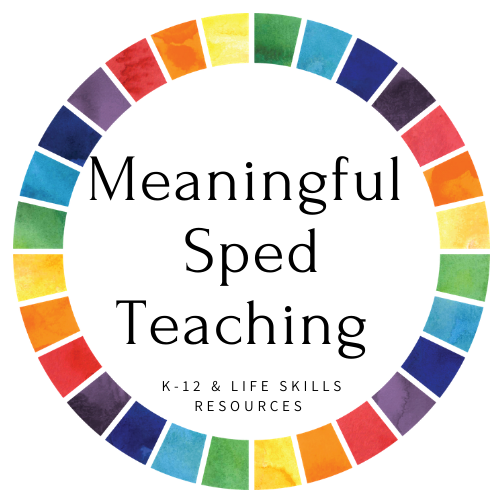
Navigating a Successful Back-to-School Season in Special Education
As the new school year approaches, it's time to prepare for a successful start in special education. Back-to-school season is a critical time for setting the tone, establishing routines, and creating a supportive learning environment. In this blog post, we will explore essential aspects of the back-to-school experience in special education, focusing on key areas such as classroom setup, social-emotional support, individualized planning, and engaging resources. Let's dive into how we can make this transition seamless and meaningful for our students.
1. Classroom Setup for Success:
Creating an inviting and functional classroom environment is crucial in special education. Consider the layout, organization, and accessibility of materials to accommodate diverse learning needs. Provide designated spaces for quiet activities, group work, and sensory breaks. Personalize the classroom with visual aids, schedules, and learning aids that promote independence and engagement.
- Flexible Seating Arrangements: Creating an inviting and functional classroom environment in special education can involve incorporating flexible seating arrangements. Providing various seating options such as bean bags, cushions, or standing desks accommodates diverse learning needs and sensory preferences. This allows students to choose seating that best supports their focus, engagement, and comfort, enhancing their overall learning experience.
- Organized Materials and Visual Supports: Organizing classroom materials in a clear and accessible manner is essential for students with special needs. Utilize labeled storage containers, shelves, or color-coded systems to make materials easily identifiable and retrievable. Additionally, incorporate visual supports such as visual schedules, task boards, and visual aids to assist students in understanding expectations, routines, and learning content. These supports promote independence, reduce anxiety, and enhance engagement in the classroom.
- Sensory-friendly Spaces: Designating specific areas within the classroom for quiet activities, group work, and sensory breaks is crucial. Create a quiet corner with soft lighting, comfortable seating, and calming sensory materials where students can retreat when they need a break or time for self-regulation. Likewise, provide spaces for collaborative group work, equipped with collaborative tools and resources, to foster teamwork and social interaction. These designated spaces cater to the diverse sensory needs of students, ensuring an inclusive and supportive classroom environment.
2. Building Social-Emotional Support:
Supporting the social-emotional well-being of special education students is paramount. Establish a positive and inclusive classroom culture that encourages respect, empathy, and cooperation. Foster open communication channels to address students' emotions, concerns, and successes. Implement social skills activities and strategies that promote positive interactions, self-regulation, and problem-solving.
- Morning Circle or Check-In: Start each day with a morning circle or check-in activity where students have the opportunity to express their emotions, share experiences, or discuss any concerns. This practice fosters open communication and creates a safe space for students to address their social-emotional needs. Teachers can incorporate prompts or visual aids to facilitate these discussions and encourage empathy, understanding, and support among classmates.
- Social Skills Lessons and Activities: Integrate social skills lessons and activities into the curriculum to explicitly teach and practice essential social-emotional skills. This can include activities such as role-playing scenarios, cooperative games, or collaborative projects that emphasize teamwork, active listening, conflict resolution, and perspective-taking. By providing structured opportunities for students to learn and apply these skills, teachers support their social-emotional well-being and enhance their ability to navigate social interactions successfully.
- Emotion Regulation and Self-Care Strategies: Incorporate regular opportunities for students to practice self-regulation and self-care strategies within the classroom. This can involve implementing mindfulness exercises, deep breathing techniques, or relaxation activities to help students manage their emotions and reduce stress. Teachers can also create a calming corner or sensory space equipped with soothing materials and tools for students to use when they need a break or require sensory input. By teaching and encouraging these strategies, teachers support students' emotional well-being and equip them with lifelong coping skills.
3. Individualized Planning:
Individualized Education Programs (IEPs) play a vital role in special education. Collaborate with parents, caregivers, and support staff to review and update IEPs before the school year begins. Set goals and objectives that align with each student's unique needs and abilities. Establish effective communication channels to regularly update parents and caregivers on student progress and ensure everyone is working together to support student success.
4. Engaging Resources for Differentiated Instruction:
Utilize engaging resources that cater to diverse learning styles and abilities. Incorporate interactive technology, visual aids, manipulatives, and hands-on activities into your lessons. Explore resources that target specific skills, such as life skills, math, literacy, and social-emotional development. These resources provide opportunities for meaningful engagement and reinforce the acquisition of essential skills.
As we embark on a new school year in special education, it is essential to focus on creating a supportive and engaging learning environment. By considering the classroom setup, social-emotional support, individualized planning, and utilizing engaging resources, we can ensure that our students have a successful back-to-school experience. The key is to foster a sense of belonging, address individual needs, and provide opportunities for growth and development.
Let's embrace the excitement of a new school year and make it a time of learning, connection, and empowerment in special education. By setting the stage for a positive and inclusive environment, we can inspire our students to reach their full potential and celebrate their unique abilities. Together, let's make this back-to-school season a memorable and transformative experience for all.







